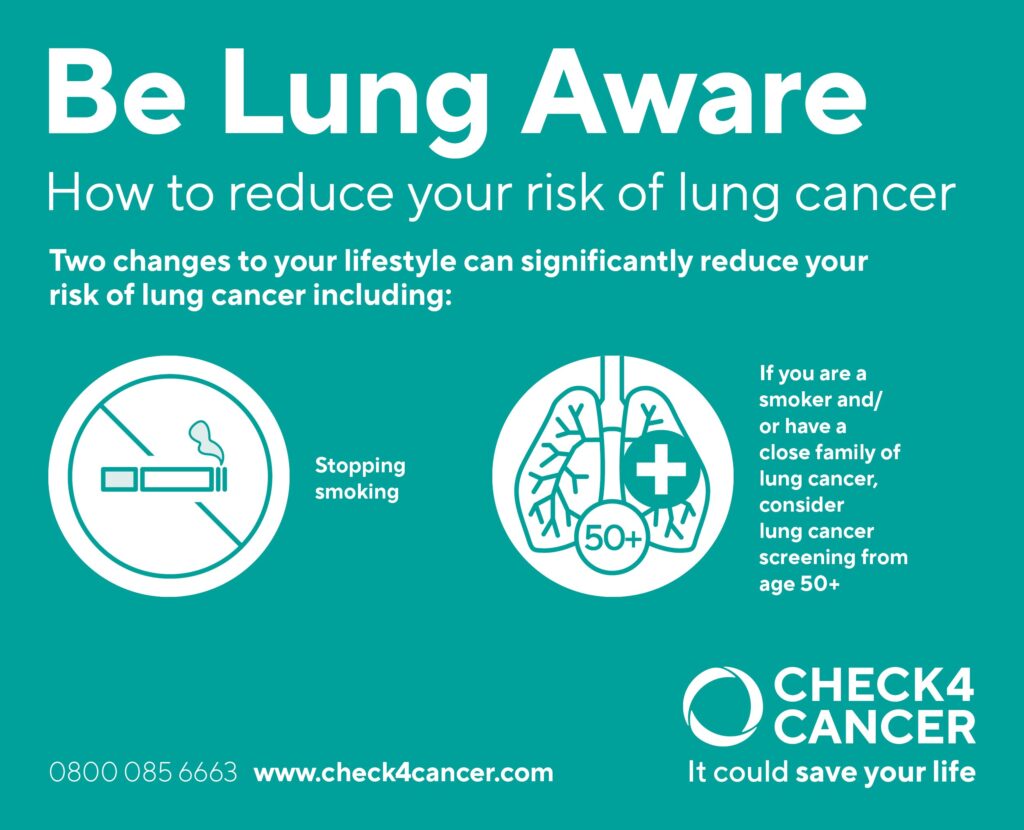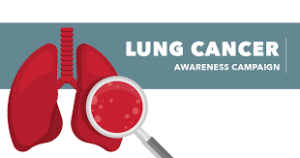LUNG CANCER: PREVENTION AND RISK REDUCTION

Lung cancer remains one of the most prevalent and deadly cancers worldwide. However, adopting preventive measures can significantly reduce the risk of developing this disease. This article emphasizes key strategies for lung cancer prevention, focusing on smoking cessation, reducing exposure to environmental pollutants, and maintaining a healthy lifestyle. Additionally, it highlights the importance of lung cancer screening programs for individuals at high risk.
THE CRUCIAL ROLE OF SMOKING CESSATION

Firstly, smoking is the leading cause of lung cancer. Research consistently shows that smokers are far more likely to develop lung cancer than non-smokers. Thus, quitting smoking is the most effective way to reduce the risk of lung cancer.
Transitioning from smoking to a smoke-free life can be challenging, but various resources and strategies can aid in this process. Nicotine replacement therapies, such as patches or gum, and prescription medications can help manage withdrawal symptoms and cravings. Additionally, counseling and support groups provide emotional support and practical advice, increasing the likelihood of successfully quitting.
Moreover, avoiding secondhand smoke is equally important. Secondhand smoke exposure can also significantly increase lung cancer risk. It is essential for both smokers and non-smokers to create smoke-free environments. This involves not only quitting smoking but also ensuring that public spaces and homes are free from tobacco smoke. For example, advocating for smoke-free policies in workplaces and public areas can contribute to a healthier community.
REDUCING EXPOSRE TO ENVIRONMENTAL POLLUTANTS

Besides smoking, exposure to environmental pollutants is another significant risk factor for lung cancer. Air pollution from sources such as vehicle emissions, industrial activities, and wildfires can contribute to lung cancer risk. To mitigate this risk, it’s crucial to take steps to limit exposure.
Firstly, staying informed about air quality in your area is essential. Many regions provide air quality index (AQI) reports that indicate pollution levels. On days when the air quality is poor, limiting outdoor activities, especially strenuous exercises, can help reduce exposure.
Secondly, reducing indoor pollution is also important. This can be achieved by using air purifiers and ensuring proper ventilation in homes. Avoiding the use of products that emit harmful fumes, such as certain cleaning agents and paints, can also contribute to a healthier indoor environment.
Furthermore, occupational exposure to carcinogens can pose a significant risk. Individuals working in industries such as construction, mining, or manufacturing should follow safety guidelines and use protective equipment to minimize exposure to hazardous substances.
MAINTAINING A HEALTHY LIFESTYLE TO HELP REDUCES CHANCES OF GETTING LUNG CANCER

In addition to avoiding smoking and reducing exposure to pollutants, maintaining a healthy lifestyle plays a crucial role in prevention of the cancer of the lungs. Eating a balanced diet rich in fruits, vegetables, and whole grains provides essential nutrients and antioxidants that support overall health. These dietary choices can also help strengthen the immune system, potentially lowering the risk of cancer.
Regular physical activity is another important component of a healthy lifestyle. Engaging in moderate exercise, such as walking, cycling, or swimming, can help maintain a healthy weight and improve overall well-being. Exercise also supports lung function and cardiovascular health, which are beneficial for reducing cancer risk.
Additionally, maintaining a healthy weight is vital. Obesity has been linked to an increased risk of various cancers, including cancer of the lungs. By adopting a balanced diet and staying active, individuals can manage their weight effectively and reduce their risk of developing lung cancer.
PROMOTING AWARENESS OF LUNG CANCER SCREENING PROGRAMS

For individuals at high risk, lung cancer screening programs offer a valuable tool for early detection. Screening can identify lung cancer at an earlier stage when treatment is more likely to be effective. The most common screening method is low-dose computed tomography (LDCT), which has been shown to reduce lung cancer mortality in high-risk populations.
High-risk individuals typically include those with a history of heavy smoking, current smokers, or those who have quit smoking within the past 15 years. Additionally, individuals with a family history of lung cancer may also be considered at higher risk.
Understanding eligibility for screening and discussing it with a healthcare provider is crucial. Screening guidelines often suggest annual LDCT scans for high-risk individuals, but recommendations may vary based on personal health factors. Therefore, consulting with a medical professional to determine the appropriate screening schedule is important.
Furthermore, raising awareness about lung cancer screening is essential. Many people are unaware of the benefits of screening or may not realize they are at high risk. Public health campaigns and educational programs can help inform individuals about the importance of screening and encourage those who are eligible to participate.
CONCLUSION.
In summary, lung cancer prevention involves several key strategies. Firstly, smoking cessation remains the most effective way to reduce lung cancer risk. By quitting smoking and avoiding secondhand smoke, individuals can significantly lower their chances of developing the disease.
Secondly, reducing exposure to environmental pollutants and maintaining a healthy lifestyle are also crucial. Monitoring air quality, minimizing indoor pollution, and adopting a balanced diet with regular exercise can contribute to overall health and lower the risk of getting it.
Additionally, for those at high risk, participating in lung carcinoma screening programs can lead to early detection and improve treatment outcomes. Understanding eligibility for screening and staying informed about available programs are essential steps in managing lung cancer risk.
By implementing these preventive measures and promoting awareness, individuals can take proactive steps toward reducing their risk of lung cancer and improving their overall health. Embracing these strategies not only enhances individual well-being but also contributes to the broader goal of reducing lung cancer incidence and mortality.
REFERENCES:
- American Cancer Society. (n.d.). Lung Cancer Prevention and Early Detection. Retrieved from American Cancer Society
- National Cancer Institute. (n.d.). Lung Cancer Screening. Retrieved from National Cancer Institute
- U.S. Environmental Protection Agency. (n.d.). Indoor Air Quality. Retrieved from EPA
- Centers for Disease Control and Prevention. (n.d.). Smoking and Tobacco Use. Retrieved from CDC
Written by Fawzi Rufai, Medically Reviewed by Sesan Kareem